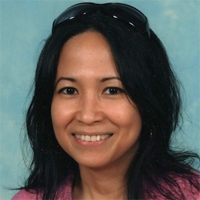“She’s a witch! Burn ‘er!”
“How do you know she’s a witch?”
“She turned me into a newt! … I go’ better…”
Those immortal words from the sketch “Monty Python and the Holy Grail” make us laugh today. But, in June of 1692, those words were almost as damning as pleading guilty to murder. Salem, Massachusetts wanted to prove that the people were not going to tolerate witchcraft of any kind. Between June 2 and October 29, 1692 a total of 25 men and women were hanged on accusations of witchcraft. The trials spawned religious hysteria and challenged a newly forming state to set down laws for self-governing that would prevent situations such as the witch trials in the future.
The quiet, Puritanical town of Salem Village did not know that it would be in for heartache and tragedy. In 1688, Martha Goodwin, age 13, found herself in an argument with a female servant—Goody Glover. Afterwards, Martha began to exhibit bizarre behavior and within a few days, her siblings began with similar behavior. Talks of bewitchment began circulating and, eventually, Good Glover was arrested and hung for witchcraft.
Four years later, in January of 1692, all Hell was literally about to break lose in Salem Village. Elizabeth Parris, daughter of Samuel Parris, the unpopular Salem minister; her cousin, eleven year old Abigail Williams; and, eventually, their friend Ann Putnam, Jr. and two of her friends, began exhibiting behavior similar to the Goodwin children of four years prior. Rev. Parris began preaching about witchcraft from his pulpit. Already an unpopular minister, he had been preaching about conspiracies against him for months. The witchcraft messages did little to help his position.
By March, three more girls began exhibiting similar symptoms as Abigail and Elizabeth—Ann Putnam, Jr. (12), Mercy Lewis (17), and Mary Walcott (17). Rev. Parris had his daughter sent away to heal and recuperate, leaving Abigail and Ann as the youngest accusers during the trial. Ann would testify at all but one of the trials. The whirlwind of March, April, and May saw more people accused and “checked” for what was called a “witch’s teat”—a purple mark somewhere for the person to give suck to the devil.
By June, the hysteria flared and people were out for blood. In 17th-Century New England, witchcraft was a civil felony, punishable by death by hanging. June 2, 1692 started the infamous trials. Bridget Bishop pleaded innocent to the charges of witchcraft, but her pleas meant nothing to the girls accusing her, the judge, nor the jury—she was found guilty and sentenced to hang. She was the first of 25 men and women to be executed in Salem Village for witchcraft.
After the trials ceased, Ann Putnam, Jr. eventually apologized for her part in the trials, admitting to falsely accusing people and begging for the forgiveness of God and friends. Was the trial nothing more than, as Rev. Parris said, a conspiracy? To our eyes in our times, we would think so. There are many records of the actual proceedings, but as to the motives, we are left to speculate.
For more information on the Salem Witch Trials, please visit the following sites:
National Geographic
The Salem Witchcraft Trials
Salem, MA

Printer Friendly Version

